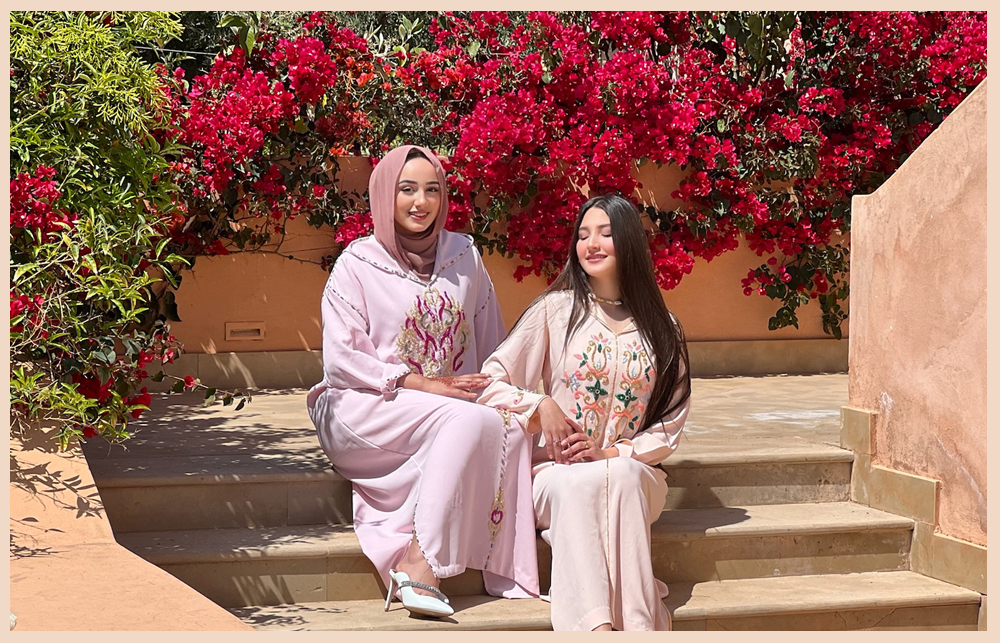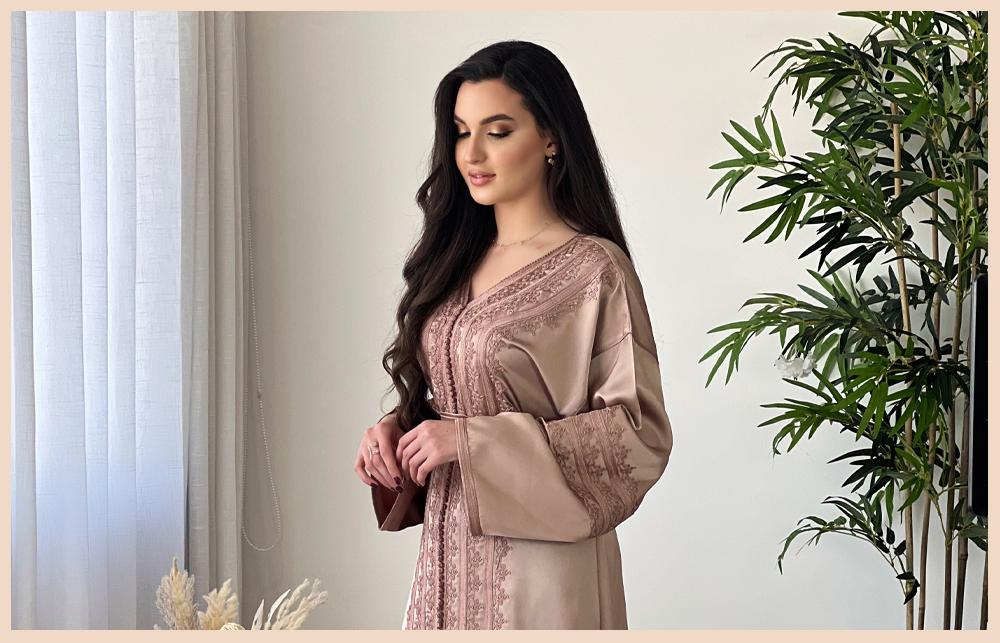Article: The Moroccan Jellaba: A Timeless Garment that Captures Morocco's Rich Heritage

The Moroccan Jellaba: A Timeless Garment that Captures Morocco's Rich Heritage
In the realm of Moroccan fashion, the jellaba stands as a symbol of cultural identity, history, and enduring elegance. This traditional attire, worn by both men and women, has deep roots in Morocco's rich heritage and continues to weave its way into the fabric of modern fashion. In this article, we will delve into the history, design, and cultural significance of the Moroccan jellaba.
The jellaba's history is intertwined with Morocco's multicultural heritage, with influences from Arab, Berber, Andalusian, and Sub-Saharan African cultures. Its origins can be traced back centuries, making it one of the oldest forms of attire in North Africa. The word "jellaba" is said to be derived from the Arabic term "jalabiya," which was originally worn in the Middle East. Over time, the jellaba evolved in design and fabric to suit Morocco's diverse climates and traditions.
The traditional Moroccan jellaba is characterized by its loose, ankle-length robe with long sleeves. It often features a pointed hood called a "koukou," which adds a distinctive touch to the garment and serves as a practical head covering against the harsh desert sun or cool mountain winds. The jellaba typically has a front slit, enabling ease of movement and comfort.
Jellabas are made from various fabrics to suit different occasions and seasons. Lighter cotton or linen jellabas are worn in the heat of summer, while warmer woolen jellabas provide comfort during Morocco's chilly winters. Decorations and embellishments vary widely, from intricate embroidery to hand-woven patterns, and can be specific to different regions and tribes, adding a touch of individuality and cultural significance.
The jellaba carries profound cultural significance in Morocco. It is more than just clothing; it's a symbol of tradition, identity, and pride. The design and colors of a jellaba can indicate a person's geographical origin, social status, and even their tribe or family lineage. In modern Morocco, the jellaba remains an essential part of the national dress, worn with pride on special occasions, religious holidays, and daily life.
The jellaba has also played a role in preserving Morocco's artisanal traditions. Skilled craftsmen and women create beautiful jellabas using age-old techniques, and the art of crafting these garments is often passed down through generations. This not only sustains the country's textile industry but also keeps Moroccan craftsmanship alive.
While the traditional jellaba remains cherished, the garment has also undergone modern adaptations to cater to contemporary fashion preferences. Designers and fashion houses have embraced the jellaba's timeless silhouette and integrated it into their collections, making it a part of the global fashion landscape.
In Morocco, you'll find people of all ages proudly wearing their jellabas for various occasions. It is equally common to see tourists donning this traditional attire as a sign of respect and appreciation for Moroccan culture.
In conclusion, the Moroccan jellaba is not just a piece of clothing; it's a living embodiment of the country's history, culture, and artistry. As Morocco continues to evolve and modernize, the jellaba remains a steadfast symbol of its cultural richness and identity. Whether worn as a cherished heirloom or as a contemporary fashion statement, the jellaba is a testament to the enduring appeal of traditional Moroccan fashion.

